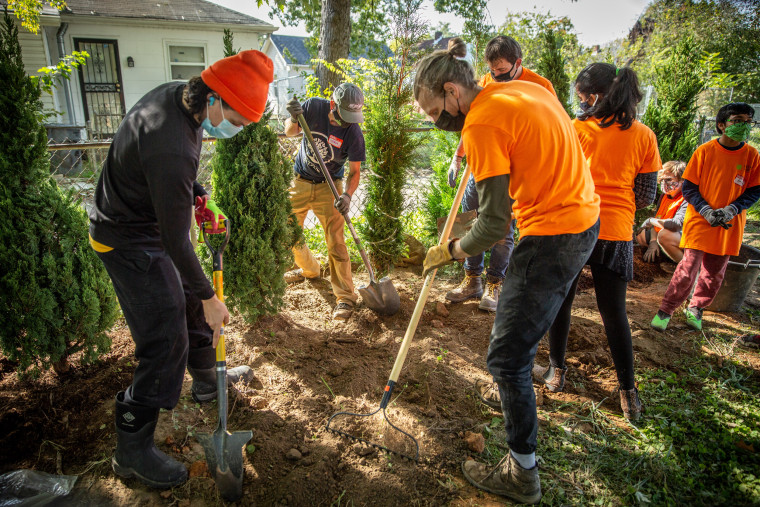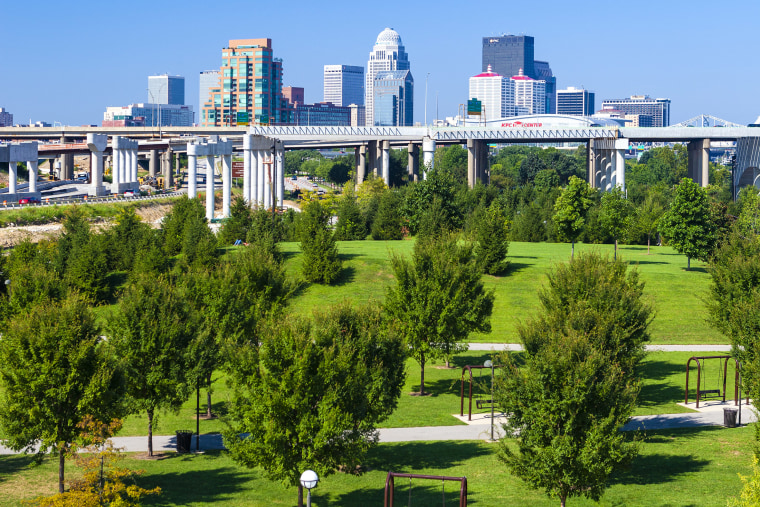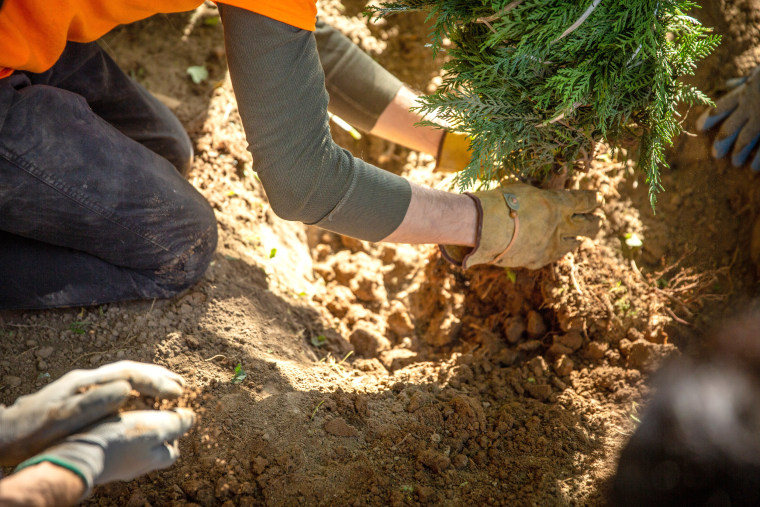Living in wooded areas may reduce heart disease risk, study finds

Living in a tree-filled neighborhood may be as good for your heart as regular exercise, a new study finds.
Researchers at the University of Louisville designed a clinical trial that followed hundreds of people living in six low- and middle-income neighborhoods in south Louisville, Kentucky. They used blood and other samples to better understand how their heart risks changed before and after the team planted thousands of mature trees near their homes.
Results from the Green Heart Louisville Project’s HEAL study, released Tuesday, showed that people living in neighborhoods with twice as many trees and shrubs had lower levels of a blood marker associated with heart disease, diabetes and some types of cancer than those who lived in neighborhoods with fewer trees.

“We’re trying to see if we can reduce rates of heart disease in a community,” said Aruni Bhatnagar, a professor of medicine at the University of Louisville who led the project.
Most previous studies showing the effects of nature on mental and physical health are observational and cannot answer the question of whether people who live in green communities are healthier because they are wealthier and have access to better health care.
The HEAL study was set up with a control group and an intervention, which is something measurable that some participants were exposed to during the study but not before.

Bhatnagar and his team recruited about 750 people living in a 4-mile-long area south of Louisville that is bisected by a highway. The residents ranged in age from 25 to 75.
Nearly 80% of respondents were white and 60% identified as women. Half of them reported an average household income of $50,000.
The researchers collected blood, urine, nail and hair samples, as well as health data, from each person before beginning their intervention.
Then, from 2019 to 2022, they planted nearly 8,500 evergreen trees, 630 deciduous trees (those that lose their leaves in the fall) and 45 different types of shrubs in parts of the 4-mile study area, leaving others intact.
Last year and this year, they took new samples from residents living in both areas.
People living in the intervention areas had 13 percent lower levels of high-sensitivity C-reactive protein, a blood marker associated with heart disease including stroke, coronary heart disease and heart attacks. That drop was similar to what was seen when starting a regular exercise routine, Bhatnagar said.
“I didn’t expect such a strong response from the biomarkers, and it suggests maybe there really is something causal here with how trees impact health,” said Peter James, director of the Center for Occupational and Environmental Health at the University of California, Davis School of Medicine, who was not involved in the new research.

How Trees Can Improve Physical Health
Previous research has shown that spending time in green spaces improves mental health.
The new study has shown the link between living among more trees and physical health.
Trees provide shade and cool the areas where they are planted, helping to mitigate the urban heat effect that disproportionately affects low-income neighborhoods and neighborhoods of color. Heat aggravates heart disease and can cause heat stroke in people without preexisting conditions.
Trees also muffle noise, which is linked to higher rates of cardiovascular disease, James said.
“They provide spaces where people can relax, exercise and, probably most importantly, socialize,” Joan Casey, an environmental epidemiologist and associate professor of environmental and occupational health sciences at the University of Washington, said in an email.
“They also replace other unhealthy land uses, such as industrial sites,” she said.
Given that one of the city’s major highways runs through the study area, Bhatnagar and his team speculate that the trees’ ability to filter air pollution and protect neighborhoods from the constant inhalation of harmful particles could be one of the main ways the tree-planting intervention appears to reduce markers of inflammation in people living in green areas.
During the study, project officials planted trees only in areas of south Louisville where air quality was the worst. Air samples were taken before the project, and analysis of the impact of the new tree cover on pollution is still ongoing. It’s a complex task because air quality fluctuates with weather conditions: A windy day can increase or decrease air pollution in some areas, depending on the wind direction, and air pollution is worse on warmer days.
The project plans to plant trees in the control neighborhoods within three to four years if the intervention neighborhoods continue to show positive results. It also wants to determine whether tree cover improves children’s sleep or immune systems by encouraging outdoor play.
“There is no definitive proof,” Bhatnagar said. “But this is the strongest evidence of any study ever done on trees and their connection to health.”
There is growing evidence of the importance of ensuring an equitable distribution of green spaces in cities, which is not currently the case.
Casey said it was important for planners to be careful not to create “green gentrification” when creating more equitable access to green spaces in cities – that is, when spaces such as waterfronts are restored and housing prices rise as a result, making it unaffordable for current residents to continue living there once a green space is completed.
“The take-home message here is that nature is not a commodity; green spaces are not a perk for the rich. They are essential to us as human beings,” James said.




